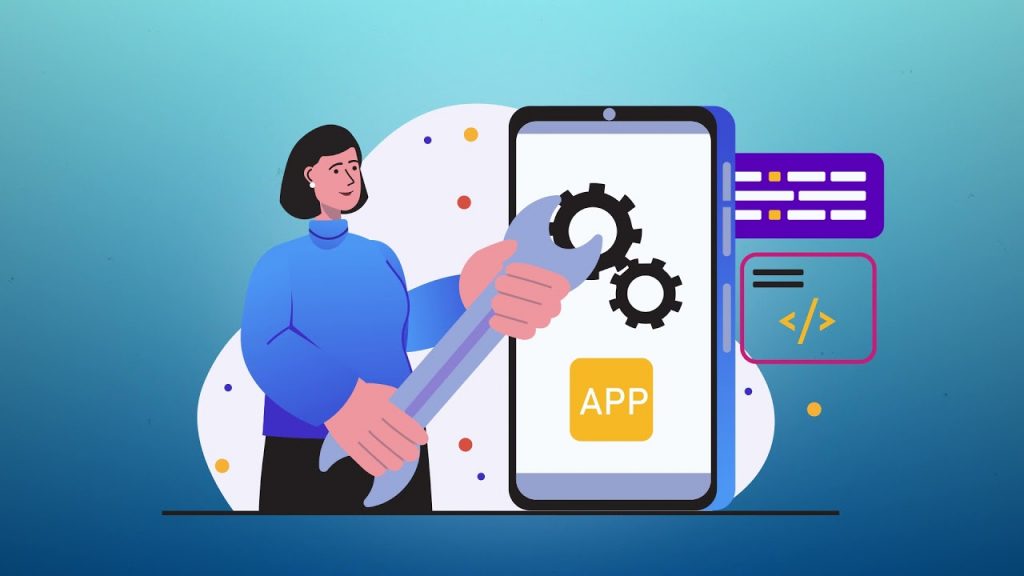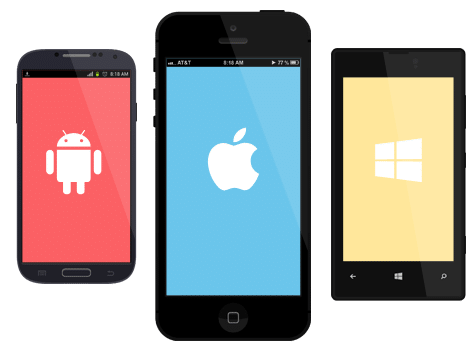I. Introduction
A. Evolution of Mobile Development
Mobile development has emerged as a technological revolution from the first cell phones with rudimentary functionality to today's sophisticated smartphones. The humble beginnings focused on voice communication, but the introduction of mobile internet marked a major turning point. This has enabled access to a myriad of information, from emails to social media, transforming these devices into the central hub for our digital lives.
The rise of dedicated apps has also shaped mobile development, offering specific solutions for various needs, from productivity to leisure. This has encouraged innovation in user interfaces, providing intuitive and interactive experiences.
B. Socio-Economic Impact
Mobile development has had a significant impact on social and economic aspects. It has not only reduced communication barriers, bringing people together across the globe, but has also transformed business models. Companies have had to adapt, offering services and experiences optimized for mobile platforms, highlighting the growing importance of these devices in our daily lives.
B. Importance of mobility in modern life
Extension of Identity and Social Interactions
Mobile devices have become extensions of our identity, reflecting our tastes, interests and relationships. They have transformed the way we interact socially, facilitating exchanges and connections anytime, anywhere.
Cross-Sectoral Impacts
Mobility has transcended sector boundaries, transforming areas such as healthcare, education, commerce and even financial services. Dedicated apps offer solutions for monitoring health, facilitating remote learning, making financial transactions, and much more.
Reinvention of the User Experience
The focus on mobility has redefined the standards of user experience. Consumer expectations have evolved, demanding user-friendly interfaces, increased accessibility and innovative features.
II. Fundamentals of Mobile Development

A. Birth of Mobile Communications
Imagine the first cell phones, bulky and offering basic voice communication features. It was the start of an adventure, the spark of an era of mobile connections.
Practical Tip: In creating mobile applications, the secret lies in deeply understanding the needs and desires of users. Design experiences that dazzle and meet their exact expectations.
The advent of the Mobile Internet
It was the revolution: 3G, 4G, and now the dazzling 5G. These advances have propelled instant accessibility to an ocean of knowledge, transforming our phones into portals to a limitless digital world.
Practical Tip: To create successful apps, think speed and accessibility. Make sure your app loads quickly and works flawlessly on all types of connections.
The Smartphone Revolution
Enter the era of smartphones, these technological marvels: touch screens, infinite applications, compact devices that have become our everyday companions. They have become much more than just phones.
Practical tip: Ensure a consistent experience across all devices. Your app should look beautiful and functional no matter what smartphone the user is using.
B. Impact of Mobile Devices on Industries
Financial and Commercial Revolution
Transactions in the blink of an eye, revolutionary mobile payments. E-commerce platforms have experienced phenomenal growth thanks to simple and secure shopping experiences.
Practical tip: Safety is crucial. Invest in secure payment protocols to build trust with your users.
Media and Entertainment Transformation
Entertainment apps have had to reinvent themselves to deliver experiences tailored to mobile screens. It took a good dose of creativity to design immersive and intuitive interfaces.
Practical Tip: User experience is the crown jewel. Create captivating interfaces and content to retain your audience.
Reinvention of Services
Health, education, government services: everything is now in our phones. Applications have transformed service delivery, offering intuitive and practical solutions.
Practical tip: Personalize services for each user. Feedback and data are treasures for continuous improvement.
III. Understanding Mobile Users

A. Mobile user profiling
In-depth exploration of User Profiles
Dive into the data to uncover the wealth of mobile users. By identifying key characteristics, behaviors and preferences, create captivating profiles. These profiles will guide you towards tailor-made experiences for each person.
Captivating Tip: Use data to create richly detailed profiles. Use intelligent analysis tools to understand the specific uses of each segment.
Personalization for an Unforgettable Experience
Personalization is no longer just an option, it is the soul of exceptional experiences. By adapting content, features and even designs based on profiles, you make every interaction shine.
Magic strategy: Take personalization further by creating unique journeys for each segment. The magic is in these personalized details.
B. User behaviors and expectations
Evolution of Exciting Expectations
Users aspire to ever more extraordinary experiences. Their appetite for fluidity, simplicity and relevance of content is constantly growing. Following these developments is the secret to staying in the race.
Inspiring strategy: Get involved in the lives of your users. Stories and interactions are sources of inspiration to meet their needs.
Agile and Responsive Adaptation
Agility is the mantra for staying ahead. Reading signals, responsiveness to feedback and continuous adjustment make your approach ever more refined, ever closer to changing expectations.
Dynamic approach: Make your users actors in the evolution of your product. Their contribution is the key to real-time adaptation.
IV. Mobile Development Strategy

A. Strategic planning for mobile applications
Imagine behind the scenes of a major production: every detail counts to create a resounding success. From setting goals to carefully managing resources and deadlines, planning is the key to a brilliant mobile app. By diving into user needs and scanning the market, you create a trajectory toward triumph.
Dynamic advice: Agile, flexible and communicative teams are the driving force behind this planning. Stay open to adjustments and innovations for an ever more captivating trajectory.
B. Integration of user experience into strategy
User experience (UX) is the crown jewel of any application. Understanding users, their desires and needs, and weaving an enchanting journey is the essence of UX. Intuitive interfaces, magnetic design and captivating features are the foundations for an unforgettable experience.
Inspirational tip: Magic happens when users participate. Their feedback, their tests and their stories fuel the evolution, ensuring an ever more magical experience.
Explorer : Naviguez dans le Futur du développement Mobile : Tendances Tech qui Transforment
V. Design and User Experience (UX)

A. Fundamentals of Design for Mobile
Magic happens when simplicity, clarity and accessibility come together in design for mobile devices. Clean interfaces, fluid interactions and functional designs transform simple use into a remarkable experience. Ergonomics becomes an orchestrated dance, offering visual comfort and instinctive navigation despite limited space.
Captivating Tip: Interacting with users early in the design process ensures perfect harmony between idea and actual experience.
B. Optimizing the UX for different mobile platforms
Navigating through different mobile platforms is like a journey through unique worlds. Each operating system has its own secrets and surprises. Adapting the user experience for each world is an exciting adventure, ensuring constant satisfaction at every step.
Inspiring Tip: Testing across multiple universes offers unexpected revelations, fine-tuning for a rich, dazzling experience on every platform.
Lire: À la Pointe du Numérique : Un Aperçu Approfondi de l’Importance du Design UI/UX dans le Développement Web et Mobile
VI. Architecture and Mobile Infrastructure
A. Choice of architecture and scalability
Imagine an architecture as the skeleton of a mobile application. Well-designed architecture is the key to harmonious growth. Opting for a flexible, modular structure allows your application to stretch and grow without ever losing its strength. It's like building a bridge that naturally adapts to constant traffic flows, providing a smooth experience for users no matter when demand peaks.
Practical Tip: Explore the benefits of microservices architecture. It provides optimal flexibility, allowing your application to adapt and thrive as load increases.
B. Database and server management for mobile applications
Think of databases and servers as the secret guardians of your application. Organized databases and agile query management ensure fast responses and an impeccable user experience. A robust and adaptable server infrastructure is like a bodyguard, ensuring stable performance even when the application is under maximum load.
Practical Tip: Using CDN is like deploying fast messengers to deliver data, providing a smoother user experience no matter where your audience is.
VII. Advanced Mobile Development

A. Cross-platform development
Imagine creating an app that feels at home anywhere. Cross-platform development provides this superpower. It saves time and money by building a solid foundation for consistent mobile experiences across different platforms. But the real challenge lies in the art of harmonizing the specificities of each environment to offer a fluid and uniform user experience.
Expert Tip: Use modern tools like Xamarin or Flutter to merge the efficiency of shared code with tweaks tailored to each ecosystem.
B. Use of advanced frameworks and tools
Imagine having a toolbox full of sophisticated solutions. Advanced frameworks and tools are this magic box of developers. They speed up the development process, reduce work complexity and add advanced features. It’s like having an arsenal of technologies to improve the quality and performance of your applications.
Inspiring Tip: Explore modern tools like Fastlane to simplify deployment tasks and frameworks like Vue.js for responsive and engaging interfaces.
VIII. Testing and Quality Assurance for Mobile Applications
A. Mobile Specific Testing Methodologies
Imagine tests specifically designed to ensure a smooth mobile experience. Interface, performance and compatibility testing with various devices and operating systems are essential. Understanding the intricacies of the mobile experience is key to comprehensive and effective testing.
Expert Tip: Use tools like Appium or Firebase Test Lab for comprehensive and rapid automated testing, ensuring maximum quality without excessive delays.
B. Quality Assurance Strategies for Mobile Applications
Quality assurance is a common thread at each stage of mobile application development. Frequent testing, careful feature evaluation, strong security, and proactive anomaly management are vital to delivering a flawless user experience. Cultivate a quality culture from the start
Advanced tip: Engage users for constructive feedback and continuous quality improvement, ensuring exceptional applications.
IX. Deployment, Launch and Promotion Strategies
A. Deployment process on different platforms
Imagine a carefully orchestrated ballet to propel your application on different platforms. This involves careful adaptation to the requirements of each platform, rigorous testing for perfect compatibility, and compliance with the specific standards of each application store (App Store, Google Play, etc.) before going live.
Expert Tip: Simplify deployment with tools like Fastlane or Bitrise, automating the process for smooth, fast publishing across all platforms.
B. Mobile Launch and Marketing Strategies
Launching a mobile application is an exciting marketing adventure. This involves clearly defining objectives, in-depth knowledge of your target audience, planning impactful campaigns, skillful use of social media, strategic announcements and judicious partnerships. Creating captivating content is the key to grabbing users’ attention.
Advanced tip: Explore the potential of influencer marketing by collaborating with influential figures to amplify the reach of your app and generate real buzz.
Explorer : Visibilité 360 : Les Clés du Succès dans l’Univers Concurrentiel des Applications Mobiles
X. Maintenance and Updates
A. Update and patch management
Let’s imagine a process of constant improvement for our mobile applications. Introducing new features while eliminating bugs and vulnerabilities is essential. Providing rigorous testing windows before each update is essential to maintain the stability and excellence of the application.
Expert Tip: Create a regular update schedule, paying special attention to fixing critical bugs, ensuring a smooth user experience.
B. Proactive and reactive maintenance of mobile applications
Proactive maintenance involves constant monitoring to anticipate and prevent potential problems. Preventative adjustments optimize performance and minimize risks. In the event of an anomaly, reactive maintenance intervenes for an immediate resolution.
Advanced Tip: Leverage usage data to predict needs and anticipate improvements, ensuring a constantly optimized user experience.
XI. Security and Privacy of Mobile Applications

A. Security threats specific to mobile applications
Imagine a complex landscape where our mobile applications navigate through diverse threats. From stealth malware to identity theft risks, these challenges weigh on data security. Vulnerabilities in wireless networks and possible data leaks following security breaches put user privacy at risk.
B. Security measures to protect user data and privacy
Data security and privacy protection require a proactive approach. Wrap your sensitive data in an encryption shield. Adopt double verification for more secure access. Remember to regularly update your application to counter threats. Educate, alert and guide your users through informative messages to strengthen their security.
XII. Data Analysis and Continuous Optimization
A. Using data to improve application performance
Data represents the fertile ground for continuous improvement of mobile applications. They reveal usage habits, the most requested features and possible friction points encountered by users. Analyzing this data allows you to make precise adjustments, optimize existing features, and design new features that meet user needs and preferences.
Practical tip: Identify key metrics (user time, conversion rate, etc.) for accurate performance assessment and informed decision-making.
B. Analysis techniques to optimize user experience
A variety of analysis techniques provide a holistic view of user experience. Analyzing user journeys, mapping interactions, evaluating feedback and comments, as well as using demographic data allow for an in-depth understanding of user expectations and behaviors. This information helps personalize the experience, remove potential obstacles, and guide development to constantly adapt to changing user needs.
Advanced Tip: Use advanced analytics tools for a comprehensive view of user behaviors and trends, guiding development and optimization decisions.
Lire aussi : Sécurité dans le développement mobile : les mesures à prendre
XIII. Impact of Technological Innovations
A. Augmented reality, artificial intelligence and other advances
Imagine worlds that merge, where reality and the virtual meet. Augmented reality makes the imagination dance by superimposing magical elements on the real world, offering fun and interactive experiences. Artificial intelligence, meanwhile, gives apps a touch of genius, with voice recognition, tailored recommendations and sophisticated personalization, transforming every interaction into a tailor-made adventure.
B. Influence of these innovations on the future of mobile development
These technological revolutions are shaping the future, offering applications that seem to think and react like caring friends. Augmented reality promises a ballet of captivating experiences, while artificial intelligence transforms applications into insightful mentors, anticipating needs and personalizing every interaction. Investing in agile teams and collaborations with technology pioneers ensures seamless integration of these advances, delivering captivating and unique mobile experiences.
XIV. Key Success Factors and Best Practices
A. Effective management of mobile development teams
The success of a mobile development team depends on strong leadership and optimal management practices. Encouraging a collaborative environment, defining clear roles and objectives, and fostering innovation boost productivity. The use of suitable project management tools and communication platforms improves coordination and transparency, thus promoting efficient project progress.
Practical tip: Encourage regular meetings to evaluate progress, resolve problems and encourage creativity.
B. Adaptability and responsiveness to user feedback and technological developments
Agile adaptation to user feedback is crucial for the continuous improvement of mobile applications. Incorporating user feedback from the start of the development process promotes rapid and relevant adjustments. Closely following technological advances makes it possible to anticipate trends and integrate new functionalities, thus ensuring the competitiveness of applications on the market.
Quality Tip: Use analytics tools to understand user and technology behaviors for a clear view of needs and trends.
XV. Conclusion and Future Perspectives
A. Summary of the key elements of mobile development
In this captivating roundup, we revisit the fundamental aspects of mobile development. Delving into the essence of app creation, we highlight the vital importance of meeting changing user needs, designing immersive experiences, and effectively managing teams to ensure innovative and loved apps.
B. Projections and trends for the future of mobile development
The future looks electrifying! As we look into the future horizons of mobile development, we discover a landscape filled with dazzling augmented reality, nifty artificial intelligence and sophisticated security standards. These trends point to more intelligent, secure and adapted applications, anticipating the evolving desires of users.
Uniting these aspects, the synthesis offers a holistic vision of mobile development, while future projections outline a future full of promise, with applications that are ever more engaging and adapted to the needs of an ever-changing world.


